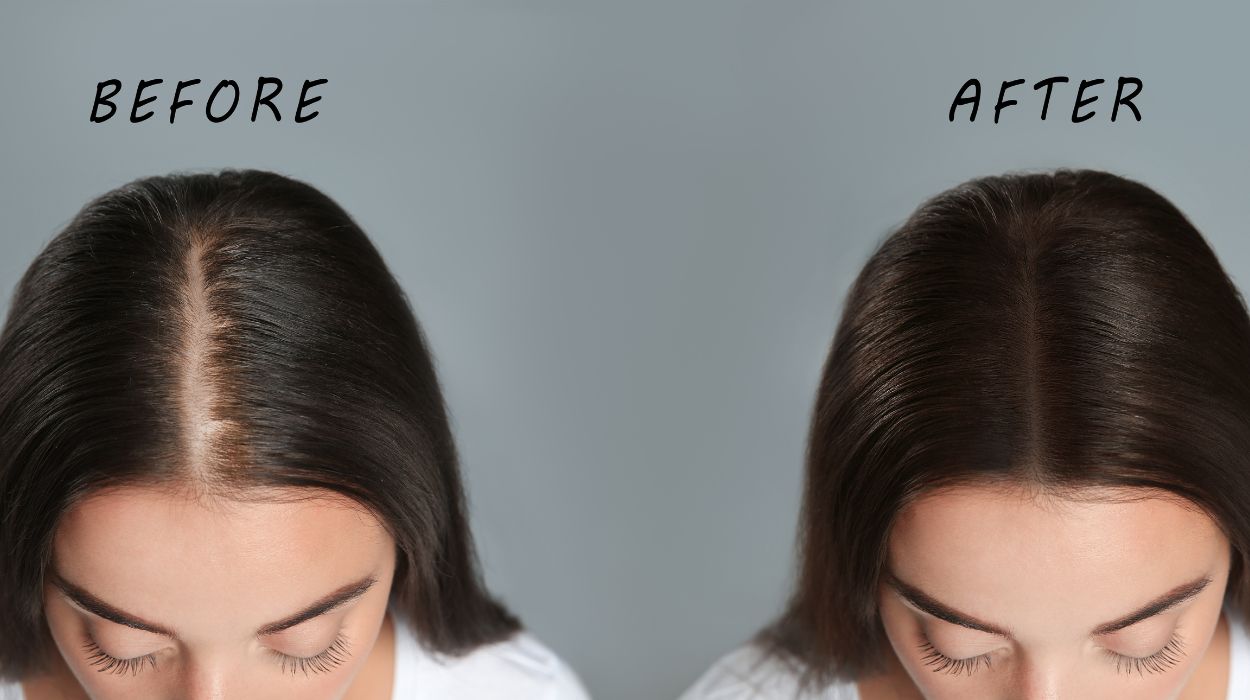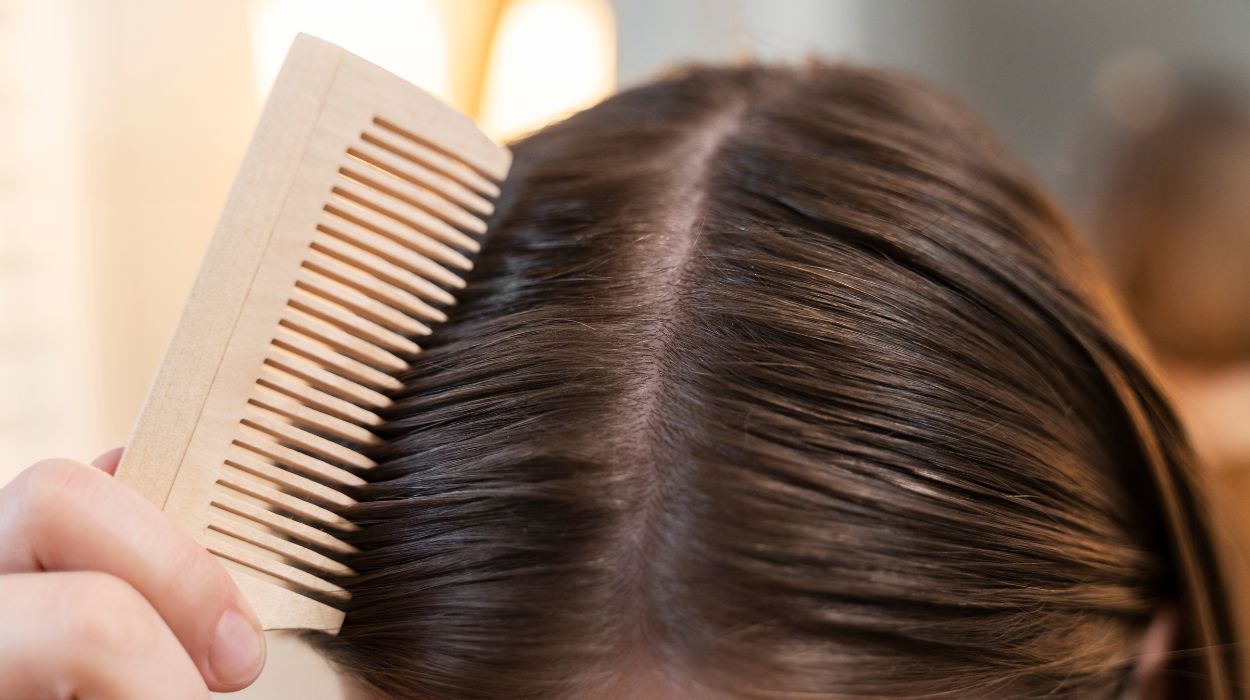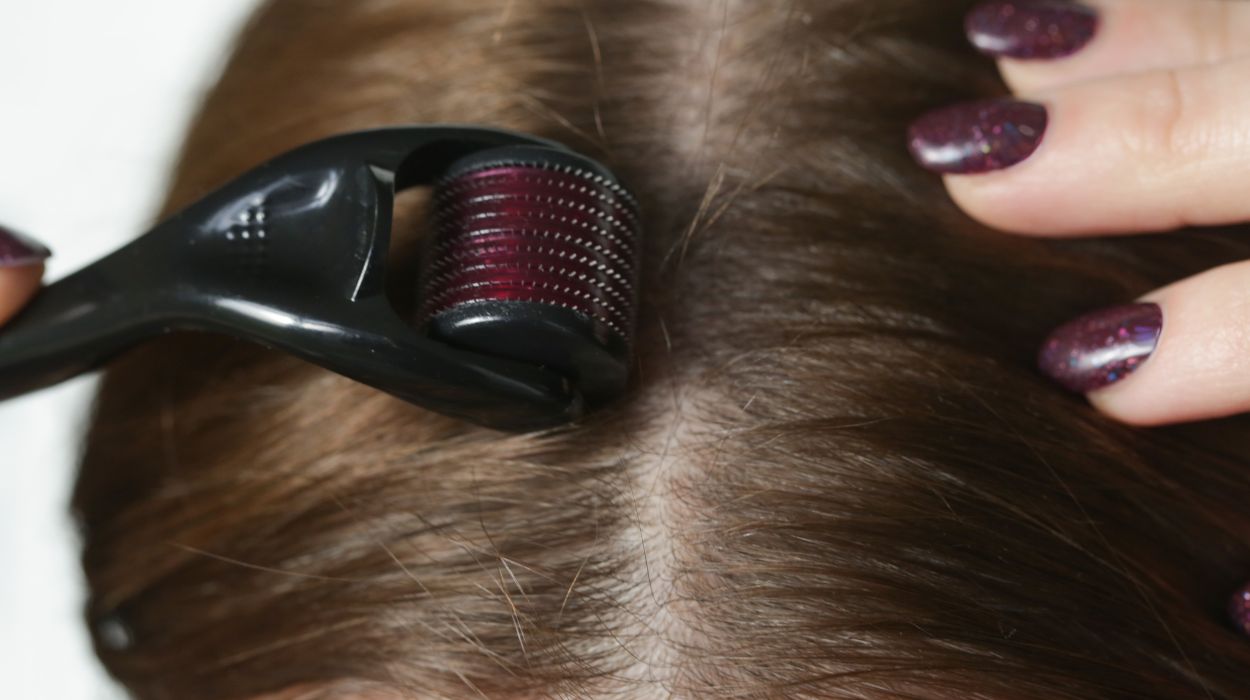 Expert's opinion
Expert's opinion
Expert's opinion
The article is a subjective view on this topic written by writers specializing in medical writing.
It may reflect on a personal journey surrounding struggles with an illness or medical condition, involve product comparisons, diet considerations, or other health-related opinions.
Although the view is entirely that of the writer, it is based on academic experiences and scientific research they have conducted; it is fact-checked by a team of degreed medical experts, and validated by sources attached to the article.
The numbers in parenthesis (1,2,3) will take you to clickable links to related scientific papers.
Microneedling For Hair Loss 2024: Benefits, How It Works & Side Effects

Hair loss has always been a concern for some people. Whether male or female, you can experience male/female pattern hair loss, with the likelihood of its occurring increasing with age. Although this generally does not indicate any medical disorders, it may make people anxious about their appearance.
In more severe cases, hair loss may be caused by a chronic autoimmune disease known as alopecia areata.[1] In this case, hair loss is the main sign of this disease and can be temporary or permanent.
Today, there are various hair loss treatments available. Although laser treatment is available through the use of certain hair devices, this may not be the safest hair loss treatment for some people. Fortunately, micro-needling has proven to be a safer method that can still provide effective results.
Here is what you need to know about microneedling for hair loss.
Benefits Of Microneedling For Hair Loss And Hair Growth
Microneedling can be effective for hair loss. It can:
- Promotes hair growth.
- Improves effectiveness of topical products
- Limited adverse effects
Benefits Of Microneedling For Hair Loss
Promotes Hair Growth

Even though the punctures caused in the process are extremely minuscule, if not outright invisible to the naked eye, it is still enough to stimulate the release of growth factors to promote hair growth. This can be especially useful for those with alopecia areata or male/female pattern hair loss.
The hair that is lost due to each condition gets replaced with new hair to cover the affected part of the scalp. Any dormant hair follicles that no longer actively produce hair can also be reactivated through this process.
However, you will not be able to see results until three to six months after your first microneedling. Another important consideration is that the medical literature is sparse on using it as the only remedy for hair loss. Most studies use it with other treatments known to be effective, like minoxidil.
Improves Effectiveness Of Topical Products
There are also topical products that can help treat forms of hair loss, with the most common one being minoxidil. When applied to the scalp as a solution or a foam, this product further stimulates hair growth and regrowth. The exact method of action, however, is unknown.
Microneedling may make these products more effective if used in tandem by allowing minoxidil to be better absorbed deeper into the skin via the punctures compared to on its own.
Limited Adverse Effects
Because the skin remains relatively intact aside from the minuscule punctures made by the needles, adverse effects are kept to a minimum in terms of frequency and severity. Thus, when done by a professional, there is very little chance the affected area will become infected. As a result, it is considered a very safe procedure.
What Is Microneedling?

Microneedling[2] is a type of dermatological treatment in which rows of thin medical needles are used to puncture the skin. This was initially intended for skin rejuvenation to eliminate lines or wrinkles for smoother, more youthful-looking skin. People have now found other uses, such as treating various kinds of surgical scars and striae.
However, there is growing interest in using micro-needling to treat hair loss disorders like alopecia. In one study, micro-needling improves hair parameters[3] for all genders and various types of hair loss.
Although the data from this study and all other related studies is of rather low quality, they still show generally good results as a way to treat androgenetic alopecia, i.e., female and male pattern baldness and alopecia areata.
Despite this and the supposed safety of the process, micro-needling is not for everyone. The FDA advises those with the following conditions to avoid using any micro-needling tools:
- Clotting or bleeding disorders — or any ailment that requires you to take blood thinners.
- Conditions that affect your skin, e.g., eczema, diabetes.
- A weakened immune system or on immunosuppressive medication.
- Allergies/sensitivities to nickel or other metals that needles could be made of.
Should We Do Microneedling For Hair Loss?
Microneedling can be a safe and effective treatment for both men and women experiencing hair loss. Certain groups of people should choose an alternative method, but overall, micro-needling is a great option with minimal risk.
How Does It Work?
The process of micro-needling utilizes a specific device for the procedure, namely a needle roller or a derma roller. With one hand stretching the skin out, the other hand is used to roll or glide the device over the area in all directions. The punctures created by the needles help stimulate the release[4] of growth factors and collagen production.
While it is possible to be able to do it yourself, it is strongly advised to see a professional for a micro-needling procedure. Without the proper equipment, sanitation methods, or pain management post-procedure, you may end up hurting your scalp or damaging your hair if you try micro-needling for hair loss at home.
Even if no complications arise from trying to do it yourself, the results won’t be as great as if you had a professional dermatologist doing it for you. Also, a professional offers the chance of an objective assessment of its results.
What Are The Side Effects?
A common question people ask when considering micro-needling is, “Can micro-needling damage hair follicles?”
Fortunately, the process does not generally pose much risk of damage or severe downsides, thanks to how minimally invasive derma rollers are designed to be. The key word here is generally.
There are still some side effects[5] to keep in mind when undergoing microneedling. Luckily, these are either mild or uncommon; they include irritation, bleeding, bruising, and itching.
Skin Irritation
The presence of persistent redness, itching, and/or sweating is very common after micro-needling treatment. However, this is simply a normal part of the healing process. Any signs of skin irritation should go away on their own in less than 24 hours.
When applied to the scalp, micro-needling may cause itching that can cause you to scratch. Scratching too hard may cause bleeding or scabbing. Fortunately, it goes away after a day.
Allergic Reactions
Some people may experience granulomatous lesions on the affected area, meaning that their scalp may experience itching in some areas. The roller’s hypodermic needles are not to blame in this case. This primarily comes from the composition of the serums and any topical anesthetics used in tandem with the roller, which may contain ingredients that people may be allergic to.
Unfortunately, derma needles are not for everyone. Those with a nickel allergy[6] may experience contact dermatitis if the needles are made of it. However, this is very uncommon.
Post-inflammatory Hyperpigmentation
People with darker skin tones can experience post-inflammatory hyperpigmentation after micro-needling. Affected areas may become darker on the scalp and are noticeable if your scalp is visible. This can also make the skin on your scalp more sensitive to UV light.
Fortunately, the likelihood of this occurring is much smaller than other alternatives for alopecia, such as laser resurfacing and deep chemical peels.
How Often Should You Use Microneedling For Hair Loss
If you plan on any subsequent microneedling treatments, they should be done once every three weeks. Doing it too frequently hinders the skin’s ability to heal. It also risks a chronic inflammatory state[7] of the affected area and systemic inflammation.
This may not seem like a big deal when used for hair loss, but remember that the skin on your scalp is important to hair health. An irritated or damaged scalp can damage your hair, which is the last thing you want if you use micro-needling for hair loss.
The Bottom Line
Whether from aging or an autoimmune disease, balding can cause people to lose self-esteem due to their altered appearance. Thus, people often turn to laser therapy, hoping it will help stop hair loss. Unfortunately, lasers are not for everyone, and common hair products might not be enough.
Microneedling is shown to be both a promising and safe way to stop hair loss and promote hair growth, but only if it is done correctly and by a professional. Even with how safe it may be for most people, there are some cases where it may not be suitable.
Regardless, micro-needling for your hair loss is worth considering if you’re seeking effective treatment. Just make sure you use a properly credentialed professional for the procedure.
+ 7 sources
Health Canal avoids using tertiary references. We have strict sourcing guidelines and rely on peer-reviewed studies, academic researches from medical associations and institutions. To ensure the accuracy of articles in Health Canal, you can read more about the editorial process here
- NIAMS (2017). Alopecia Areata. [online] National Institute of Arthritis and Musculoskeletal and Skin Diseases. Available at: https://www.niams.nih.gov/health-topics/alopecia-areata.
- Alster, T.S. and Graham, P. (2017). Microneedling: A Review and Practical Guide. [online] 44(3), pp.397–404. doi:https://doi.org/10.1097/dss.0000000000001248.
- English, R.S., Ruiz, S. and DoAmaral, P. (2021). Microneedling and Its Use in Hair Loss Disorders: A Systematic Review. [online] 12(1), pp.41–60. doi:https://doi.org/10.1007/s13555-021-00653-2.
- Hou, A., Cohen, B.E., Haimovic, A. and Elbuluk, N. (2017). Microneedling: A Comprehensive Review. [online] 43(3), pp.321–339. doi:https://doi.org/10.1097/dss.0000000000000924.
- Office (2023). Microneedling Devices: Getting to the Point on Benefits, Risks, Safety. [online] U.S. Food and Drug Administration. Available at: https://www.fda.gov/consumers/consumer-updates/microneedling-devices-getting-point-benefits-risks-and-safety.
- Margulies, S., Samia, A., Montañez-Wiscovich, M.E. and Saikaly, S.K. (2022). Microneedling in the nickel-allergic patient. [online] 9, pp.48–49. doi:https://doi.org/10.1016/j.jdin.2022.08.005.
- Maguire, G. (2022). Chronic inflammation induced by microneedling and the use of bone marrow stem cell cytokines. [online] 31(4), pp.687–692. doi:https://doi.org/10.1016/j.jtv.2022.08.001.



